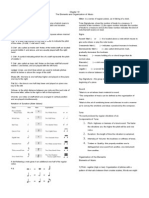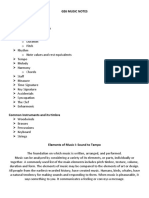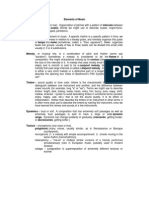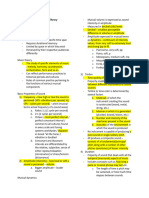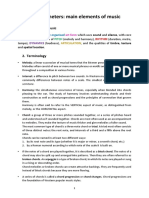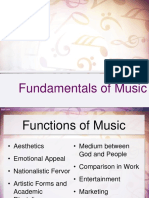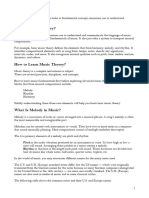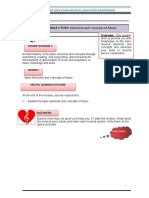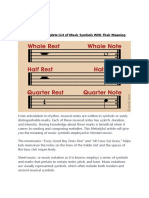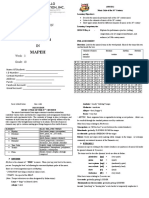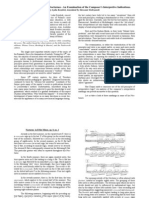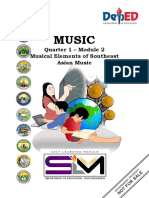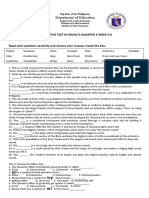0% found this document useful (0 votes)
36 views18 pagesThird Unit Compiled
The document outlines the fundamental elements of music, including pitch, melody, harmony, texture, duration, rhythm, intensity, timbre, and form. Each element is described in terms of its characteristics and how they contribute to musical composition, such as the role of clefs in pitch identification and the significance of dynamics in expressing emotion. Additionally, it discusses various instrumental groups and musical forms, providing examples from popular and classical music.
Uploaded by
alvaro.segovia2Copyright
© © All Rights Reserved
We take content rights seriously. If you suspect this is your content, claim it here.
Available Formats
Download as PDF, TXT or read online on Scribd
0% found this document useful (0 votes)
36 views18 pagesThird Unit Compiled
The document outlines the fundamental elements of music, including pitch, melody, harmony, texture, duration, rhythm, intensity, timbre, and form. Each element is described in terms of its characteristics and how they contribute to musical composition, such as the role of clefs in pitch identification and the significance of dynamics in expressing emotion. Additionally, it discusses various instrumental groups and musical forms, providing examples from popular and classical music.
Uploaded by
alvaro.segovia2Copyright
© © All Rights Reserved
We take content rights seriously. If you suspect this is your content, claim it here.
Available Formats
Download as PDF, TXT or read online on Scribd
/ 18
